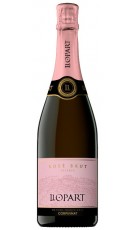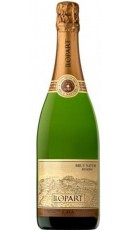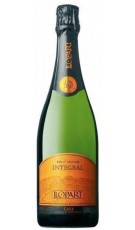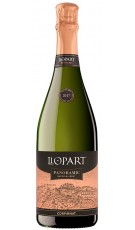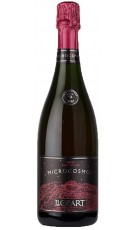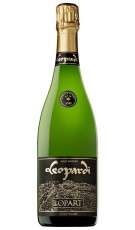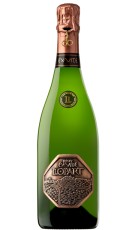
Cataluña There are 274 products.
La vid y el vino fueron introducidos por los griego en el área del Ampurdán. En época de los romanos se desarrolló el comercio de los vinos del Campo de Tarragona y de Alella, en los alrededores de Tarraco y Barcino. Durante el siglo XVIII se extendió la exporta...
Catalog
-
Abadal Nuat 2020
White wine.ROQUETA ORIGEND.O. Pla de BagesNuat refers to nu – naked in Catalan -, expressing the purity of this wine. Coming from vineyards that are more than 60 years old and from a unique production with lees, the result is an...
-
Abadal Arboset 2019
Red wine.ROQUETA ORIGEND.O. Pla de BagesExtreme, deep and authentic, Abadal Arboset expresses with purity and sincerity the most identifying elements of Abadal, such as the territory and the landscape, the search for uniqueness and...
-
Abadal Cinc 2019
Red wine.ROQUETA ORIGEND.O. Pla de BagesThe complexity of five types of merlot that grow in five different plots to make a single wine, providing the particular characteristics of each of these vineyards. On the nose, balsamic, spices...
-
Abadal 3.9 2020 Vino de Finca
Red wine.ROQUETA ORIGEND.O. Pla de BagesAbadal 3.9 Vino de Finca is the living expression of the plot where it is grown – polygon 3, plot 9; hence its name -, with calcareous stone floors on red clay. An elegant wine with a deep...
-
Abadal Picapoll 2022
White wine.ROQUETA ORIGEND.O. Pla de BagesThe first 100% Picapoll white wine to reach the market, it is a clear commitment to the identity of Bages through the recovery of this local variety. Singular, elegant and seductive.
-
Llopart Rosé Brut
Sparkling wine.Corpinnat.A unique rosé, fruit of the Mediterranean Monestrell variety. Cheerful and vibrant, this brut rosé offers us the best option to enjoy the bubbles at any time.
-
Llopart Brut Nature
Sparkling wine.Corpinnat.At the beginning of the 50s, Pere Llopart i Vilarós, as a continuator of the family tradition, contributed to making artisan sparkling wines known and prestigious, consolidating those from...
-
Llopart Integral
Sparkling wine.Corpinnat.Game of nuances, textures and varieties that offer this sparkling wine a jovial and fun character wrapped in a silky creaminess, depth and sensation of vital freshness.
-
Llopart Imperial Panoramic
Sparkling wine.Corpinnat.It is one of the wines with the longest history of Llopart, with more than 45 years old and has become one of the classics for lovers of creamy, long and elegant long-aged sparkling wines. Its...
-
Llopart Microcosmos
Sparkling wine.Corpinnat.The purest essence of the Llopart universe reflected in this sparkling Brut Nature rosé. A surprising and gastronomic sparkling rosé, the result of a blend of eclectic varieties.
-
Llopart Leopardi
Sparkling wine.Corpinnat.Produced in honor of Bernardus Leopardi, the first viticulturist of the family, documented in a Latin handwritten parchment from 1385, Leopardi is a Corpinnat Brut Nature aged for more than 60...
In stock -
Llopart Ex·Vite
Sparkling wine.Corpinnat.Llopart Ex·Vite is considered the emblem of Llopart's long aging. It combines the history and legacy of Llopart and is named after the family motto Ex Vite Vita (life comes from the vine).
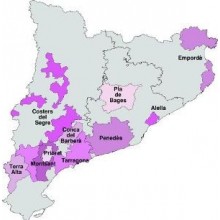
La vid y el vino fueron introducidos por los griego en el área del Ampurdán. En época de los romanos se desarrolló el comercio de los vinos del Campo de Tarragona y de Alella, en los alrededores de Tarraco y Barcino. Durante el siglo XVIII se extendió la exportación. De una parte se exportaba el vino del Ampurdán al Languedoc, y por otra parte se estimuló el cultivo de las comarcas litorales y prelitorales por la exportación a América como vino concentrado en aguardiente. Desde Villanueva y Geltrú se exportaba la producción del Penedés, desde Salou la producción del Baix Camp y del Priorato, y en menor medida desde los puertos de Rosas, Begur, Mataró, Barcelona y Tarragona. A partir del 1865, con la irrupción de la filoxera en Francia, todos los puertos orientaron la exportación al Languedoc y Provenza para atender la gran demanda francesa. Entre los años 1878 y 1900 la filoxera acabó destruyendo toda la viña de Cataluña. La replantación comportó un cambio, pasando la producción máxima del Bages al Penedès, y provocando el despoblamiento del Priorat. La replantación de cepas blancas favoreció el desarrollo del cava. Se crearon las primeras cooperativas vinícolas en Alella, Igualada y Artés, impulsadas por la Mancomunidad de Cataluña. Coincidiendo con el modernismo se construyeron grandes "cellers cooperatius" (bodegas cooperativas), denominados "catedrales del vino", en Barberà de la Conca, Espluga de Francolí, Falset, etc. En Raimat se produjo una experiencia inédita en Europa.

(+34) 91 129 11 11
(+34) 638 458 218
- Brandy
- Cognac
- Gin Premium
- Ron
- Whisky
- Denomination of Origin
- Winery
























